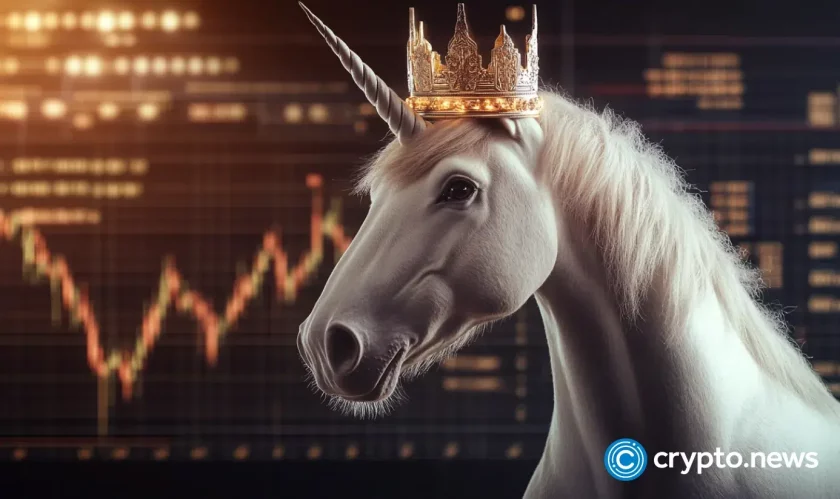NIRP, NIRP: The Negative Interest Rate Meme Just Won’t Go Away
February 6, 2019 by Jon Southurst
After a period of silence, policymakers are again raising the issue (or specter) of negative interest rates. The concept, officially called NIRP, would see official bank interest rates set at a negative percentage, in theory encouraging more borrowing and thus economic activity. But given the regular reappearance of this meme in financial policy circles and the media, is it only a matter of time before the public is conditioned to accept the idea too?
Also read: Bitcoin Legal ‘Money’ in U.S.? One Federal Court Says Aye
Subscribe to the Bitsonline YouTube channel for great videos featuring industry insiders & experts
‘We’d Just Like to Remind You… ‘
NIRP appeared again this week in the Economic Research pages of the Federal Reserve Bank of San Francisco. The bank is one of 12 that constitute the U.S. Federal Reserve system and is its second-largest by assets held. An article by research advisor Vasco Cúrdia posits that the federal funds rate, which dropped to almost zero in 2008 after the Global Financial Crisis, could have further spurred economic activity if it had been allowed to drop to -0.75 percent.
According to the regulations that govern the U.S. Federal Reserve system, the federal funds rate cannot fall below what’s called the “lower bound”, or zero percent. However, according to Cúrdia’s simulations, brief dips below that to -0.25 and -0.75 percent (if allowed) could have made recovery from the crisis faster.

Cúrdia admits that his model doesn’t account for other complexities in the economy, particularly those that could potentially arise from lenders losing money on loans they provide. He also mentions that a model is “not guaranteed to mimic outcomes in the complex U.S. economy”, but instead “should be viewed as an estimate to illustrate how much stimulus negative rates can provide”.
Reading between those lines (and a slight tip of the old tinfoil hat) suggests Cúrdia’s article exists mainly as part of the periodic suggestion that interest rates could fall to negative figures.
For now, we’re just talking about banks — that is, banks the Fed lends to might have to offload some of the money on their balance sheets or lose a small percentage of it. But Cúrdia uses language that appears to apply more to the general public, such as: “a negative interest rate could trigger people to save less and search for alternative ways to invest their money”, and “seems counterintuitive because savers can always take money out of that account and keep it in the form of cash”. He admits that “savers” would find negative interest rates hard to swallow, and seek alternatives to keeping money in banks.
NIRP, Negative Interest Rates, or a ‘Tax on Money’?
The idea of money that declines in value the longer it’s held is not new. Famed economist (and bête noire of many cryptocurrency proponents) John Maynard Keynes floated the idea as far back as 1936, referring to it instead as a “tax on money”. Such nomenclature would be unpopular in the 21st century, where increased public skepticism requires unpalatable concepts to be packaged in more sensible-sounding euphemisms like “restructuring”, “deplatforming”, and “quantitative easing”.
Now, hold cash for long enough and it declines in value anyway, thanks to inflation — which many seem to believe is a naturally-occurring phenomenon. In reality it’s officially targeted to be around 2 percent per year, since it benefits governments who over-borrow by reducing their debts over long periods of time.
But inflation goes largely unnoticed by the general public, who shrug and say “things go up” without ever asking why. A negative interest rate on savings, however, would be more noticeable. You don’t notice if the value of your currency falls, but you probably would notice if your total balance dropped in actual numbers.
Such a reality would likely prompt savers, as Cúrdia suggests, to take their money out of banks. Which brings us to our next point…
Physical Cash Is Slowly Disappearing
Negative interest rates at the central bank level have been trialled briefly in countries where it’s not against the rules: namely Sweden, Switzerland and Japan. The word “Sweden” should prick up your ears — it’s also “the most cashless society on the planet”, with just 1 percent of all payments made in physical currency, and many businesses refusing to accept cash altogether. This is touted as a progressive and desirable situation, “so far ahead of the rest of us”.
While cashless might equal convenience on the surface, it also equals less control over how money can be used. Digital payments are recordable and easily blocked, and of course withdrawals and external storage are impossible.
Those who oppose the oppose the disappearance of physical money (and who tend to not get much mainstream media time) call this the “War on Cash“.
Currencies are heading in only one direction, and it’s towards digital-only. The same media memesters that casually bring NIRP into public discourse also love to mention that cash is convenient mainly for criminals and money-launderers. Already, large-denomination banknotes are beginning to disappear around the developed world, and laws are proposed to ban cash transactions over certain amounts.

‘I’d Like to Switch Banks’ – Oh Wait
The Austrian School economists over at the Mises Institute say NIRP, or any negative interest rate, “turns classical economics on its head”. While decrying the ability of central planners to set interest rates in principle, they note that banks may tolerate negative interest rates if it means saving on the costs of storing physical money.
Ordinary members of the public, however, have balked at the idea. One German survey revealed only 7.6 percent would tolerate a NIRP on their own accounts, 44 percent would switch to a different bank, and 28 percent would store their money physically.
Those options won’t be available if someday (a) all banks implement a NIRP; and (b) physical cash has been abolished somehow. And you’d better hope your financial institution doesn’t suddenly stop serving you, as banks and credit card companies have done to some cryptocurrency traders, “adult industry” workers, and those of certain political persuasions.
Someday, interest rates might drop for longer periods below the brief -0.75 percent Cúrdia mentioned, perhaps up to -4.5 percent (according to JP Morgan estimates) in the event of a crisis… or if policymakers simply decide you should be spending more.
If and when that day comes, alternative assets that can be stored outside banks — and used easily as money — might suddenly find new user bases.
Does the reappearance of the NIRP meme make you skeptical, afraid, or neither? Let’s hear your thoughts in the comments.
Images via Pixabay





